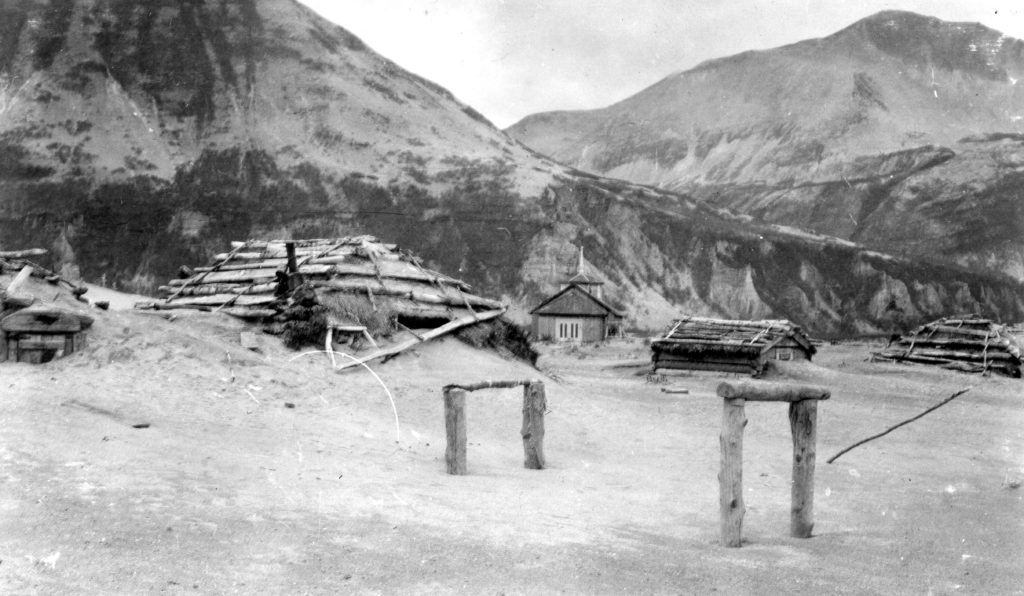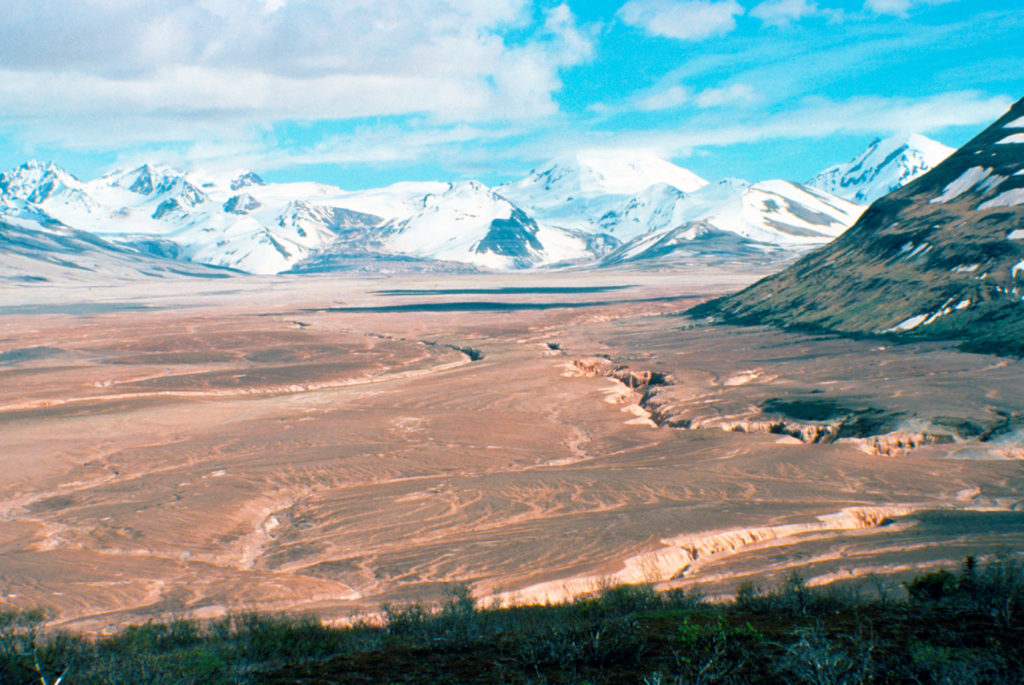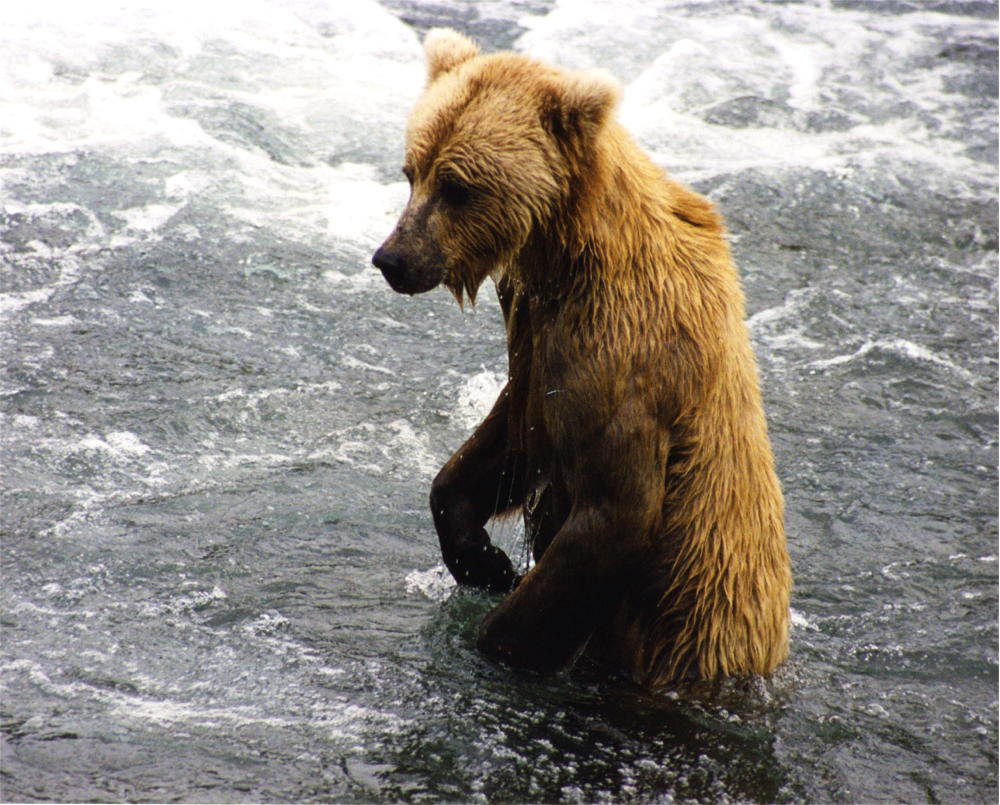On the afternoon of June 6, 1912, a massive volcanic eruption occurred on the Alaskan Peninsula, across from Kodiak Island. The Novarupta eruption was the largest in volume in the 20th Century, and surpassed in history only by the eruption of Mount Tambora about 100 years earlier. The volume of materials expelled was 30 times greater than that of the Mount Saint Helens eruption in 1980.

This area of Alaska was sparsely populated in the early years of the 20th Century, so no one was close enough to actually see the eruption itself. It was first observed by the crew of a mail boat, the Dora, who heard an explosion and then observed a smoke plume rising in the sky behind Mount Katmai, about 55 miles away. Residents of Juneau, 750 miles away, heard the explosion—about one hour after it occurred. Everyone assumed that Mount Katmai, a known site of volcanic activity, had erupted.
The ash plume rose rapidly to a height of 20 miles, spreading eastward on prevailing winds. Within 2 hours, the ash cloud had enveloped the Dora. Subsequent explosions and venting continued for three days. Settlements on Kodiak Island, 100 miles away, were blanketed in a foot of ash. Local residents huddled indoors to escape the choking atmosphere. Wildlife died by the millions, as did fish swimming in sediment-filled rivers and lakes. In subsequent days, the ash cloud spread across North America and the world, purportedly reaching Algeria by June 17. Ice cores from Greenland contain ash from Novarupta.

A team of National Geographic Society explorers, led by Robert Griggs, thoroughly investigated the site in 1916. The eruption had spewed 30 million cubic meters of material out of the earth, covering the adjacent valley in rock and ash, in some places up to 700 feet deep. The former v-shaped valley surrounding the eruption site had become a flat, barren plain. Because of innumerable steam plumes escaping from vents across the area, Griggs called the site the “Valley of Ten Thousand Smokes.” Discovering a new lava dome located near Mount Katmai, Griggs named it Novarupta—further expeditions in the 1950s later confirmed that Novarupta, not Mount Katmai, was the source of the eruption.
Griggs and others considered the area of great scientific value. They began a lobbying effort that soon convinced President Woodrow Wilson to create the Katmai National Monument on September 24, 1918. For decades after that, Katmai got little attention—by tourists or by the government—because of its remoteness. It took until the 1950s before Katmai had its first permanent ranger and first facility, at the now famous Brooks Camp.

Grizzly bears, not volcanoes, have become the starring attraction at Katmai. The area holds one of the densest grizzly populations in the country, well fed by the abundant salmon in the region’s rivers. Because of this, the protected area has been expanded and, on May 18, 1980, became Katmai National Park and Preserve, now covering slightly more than 4 million acres (by coincidence, this was the same day that Mount Saint Helens erupted; learn more about that eruption here). From fewer than 20 visitors per year in the 1920s, more than 30,000 now visit annually. And live “bear cams” are available so millions can watch bears fishing at Brooks Falls.
References:
Alaska Volcano Observatory. Novarupta reported activity. Available at https://www.avo.alaska.edu/volcanoes/activity.php?volcname=Novarupta&eruptionid=456. Accessed June 6, 2017.
Geology.com. Novarupta, the most powerful volcanic eruption of the 20th Century. Available at http://geology.com/novarupta/. Accessed June 6, 2017.
Hildreth, W., and Fierstein, J., 2012, The Novarupta-Katmai eruption of 1912—largest eruption of the twentieth century; centennial perspectives: U.S. Geological Survey Professional Paper 1791, 259 p. Available at https://pubs.usgs.gov/pp/1791/. Accessed June 6, 2017.
National Park Service. Katmai National Park and Preserve History. Available at https://www.nps.gov/katm/learn/historyculture/history.htm. Accessed June 6, 2017.
